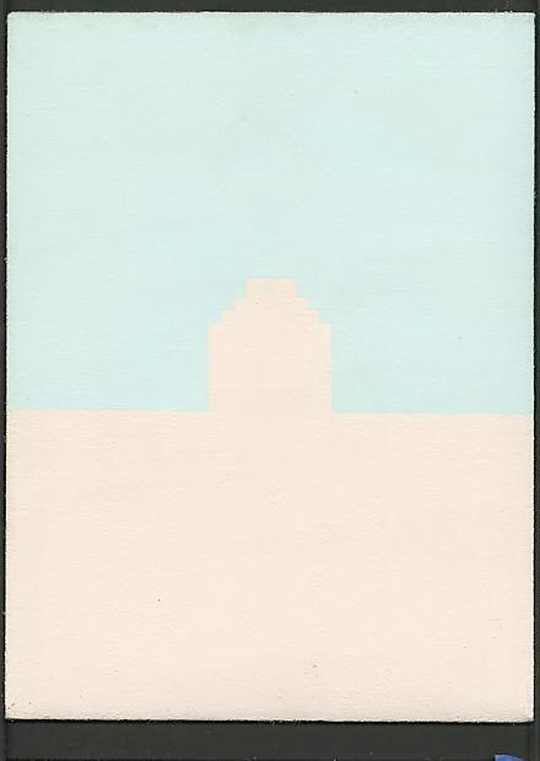
Olivia Boudet
No. 60 (1995)
Gesso, acrylic tint and pencil on canvas
Courtesy of Fred Torres Gallery. NY
505 West 28th Street
New York, NY 10001
April 3, – May 3, 2014
Olivia Boudet hails from the French Riviera where light, space, and sea define a reality, which is both expansive and strangely abstract. So, it is not surprising that Boudet’s paintings, in particular, cultivate a sense of stable emptiness where human presence is indicated by the simple architectural forms that break the carefully devised horizon line bifurcating the canvas into a dual color visual interplay of the tangible and intangible states of perception. Her color palette is based on soft pastels combined with a visual rigor and controlled spatial organization. It is that combination of sophisticated color combinations with the rigor of reduced form that gives these works both a visual tension and capacity to absorb the viewer.
The fourteen works in this exhibition, including impressive graphite drawings shown here for the first time, at first suggest a process of compositional repetition in vertical organization. But the simple repetition of a structure belies the complexity of formal elements and conceptual vision. The icon-like quality of these works cannot be ignored, but what do they represent in that context? Are they indicative of a desire for a secular form of metaphysical experience? These paintings do evoke the soft atmospheric quality and remoteness evident in the landscape painting of the artist Jean-Baptiste Corot, the forms and shadows in the still-life paintings of Georgio Morandi with their metaphysical nuances, and the conceptual abstraction of postwar abstraction clearly informed by the geography of place. But the present-ness experienced viewing a single work or a multiple-work installation is an evocative and singular visual experience.
Boudet created this body of work after her move to New York and they constitute a decade of refined production that has a cast of distance and tender haze rendered with a determined unity. There is a calm and serenity in these works that evokes the classical simplicity and proportions, but also a radical simplicity that suggests the emptiness and pure being of a void-like encounter. Given the current penchant for spectacle-based works and relational events, Boudet’s works offer a respite for the viewer, one that is both simple and complex, reductive yet full, rigorous and elegantly realized. In the catalogue essay by Christian Bernard, director of the Museum of Modern and Contemporary Art in Geneva beautifully captures the sensibility of the works as “songs without address.”
-Rosemary O’Neill
For more information, please visit: http://www.fredtorres.com/exhibition-space/2014-04-03_olivia-boudet/

Olivia Boudet
No. 17 (1993)
Gesso, acrylic tint, and pencil on canvas
Courtesy of Fred Torres Gallery, NY


























